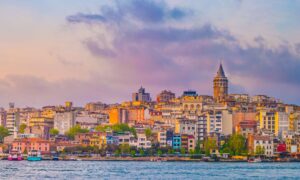Introduction:
Mountain biking is a thrilling and demanding outdoor activity that requires not only skill and stamina but also the right gear to ensure a safe and enjoyable ride. One crucial aspect of this gear is the clothing you choose to wear. MTB (Mountain Bike) clothing is designed to provide comfort, protection, and style, catering to the unique needs of off-road cycling. In this article, we’ll explore the essential components of MTB clothing and why they are vital for an optimal biking experience.
-
Jerseys and Jackets: MTB jerseys are crafted from moisture-wicking materials that keep you cool and dry during intense rides. The loose fit allows for flexibility and freedom of movement. Additionally, many jerseys feature vented panels to enhance breathability. When the weather takes a turn, a lightweight and breathable jacket can provide protection against wind and rain without compromising mobility.
-
Shorts and Pants: Mountain bike shorts are designed with durability and flexibility in mind. They are typically baggy and include features such as reinforced stitching and stretch panels to withstand the rigors of trail riding. Some riders prefer padded shorts or liners for added comfort, especially on longer rides. In colder weather or for more challenging terrain, consider MTB pants for extra protection against abrasions and the elements.
-
Gloves: Gloves are an essential part of MTB clothing, providing grip, protection, and shock absorption. Full-fingered gloves are recommended for trail riding to shield your hands from branches, rocks, and potential falls. Look for gloves with padded palms to reduce vibrations and enhance comfort during extended rides.
-
Footwear: Mountain biking demands specialized footwear with features like a grippy sole and ankle protection. Flat pedal shoes provide a large platform for better contact with the pedals, while clipless shoes allow riders to attach their shoes to the pedals, offering increased efficiency and control. Choose the type of footwear that aligns with your preferred riding style and terrain.
-
Helmets: Safety should be the top priority for any mountain biker, and a high-quality helmet is non-negotiable. Look for helmets that meet safety standards and provide adequate ventilation. Some helmets also come with a visor to shield your eyes from the sun and debris.
-
Goggles and Eyewear: Protecting your eyes from dust, debris, and the sun is crucial during off-road biking. Goggles with clear or tinted lenses offer both protection and enhanced visibility. Alternatively, consider wearing wraparound sunglasses designed for sports, ensuring they are comfortable and secure during the ride.
-
Accessories: Don’t forget the smaller details. MTB clothing accessories like arm and leg warmers, neck gaiters, and hats can provide additional protection against changing weather conditions. A hydration pack or a water bottle cage attached to your bike is also essential for staying hydrated on the trails.
Conclusion:
Investing in high-quality MTB clothing is not just about looking the part – it’s about enhancing your performance, protecting yourself from potential hazards, and ensuring a more enjoyable riding experience. Whether you’re a seasoned rider or just starting, choosing the right mountain biking clothing will contribute significantly to your comfort, safety, and overall enjoyment on the trails.














